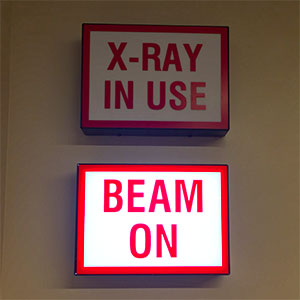News & Articles
Workplace Safety: LED Signs’ Role in Prevention Through Design
Dec 4, 2023

Just about every business — big, small, and across every industry — lists safety as its number one priority. While safety might be a buzzword in the warehouse and a point of emphasis in a company handbook, how many businesses have carefully laid plans to reduce occupational hazards and injuries? According to Alert Media’s 2023 State of Employee Safety Report, 75 percent of survey respondents feel their employers’ safety efforts have been ineffective. Companies suspecting their employees may not be completely satisfied with their safety plans should consider controlling hazards and creating new plans using the methods outlined by prevention through design.

Prevention through design (PtD) — sometimes called safety by design — is the concept of minimizing occupational hazards early in processes, emphasizing optimizing employee health and safety through the entire life of materials and processes used. PtD programs aim to prevent or reduce workplace injuries, illnesses, and deaths by implementing preventative measures in all aspects of processes that may impact workers. The philosophy here is that designing out risks and potential dangers of work premises and processes, tools, equipment, machinery, and substances is the most effective way to protect employees.
How Does a Company Start Designing Out Risks and Hazards?
An effective way to eliminate dangers and risks to employees is through the hierarchy of hazard controls. This system prioritizes possible interventions to minimize or eliminate exposure to hazards. The hierarchy’s interventions, in decreasing priority, are Elimination, Substitution, Engineering Controls, Administrative Controls, and Personal Protective Equipment.

- Elimination - The highest priority of controls is the physical removal of a hazard.
- Substitution – Next in line is replacing something that produces a hazard with something that does not or creates a lesser hazard.
- Engineering Controls – This type of control does not eliminate or substitute a hazard but isolates people from it, such as a physical barrier.
- Administrative Controls – These controls aim to alter the behaviors of workers. This includes procedure changes, employee training, and installation of signs and warning labels.
- Personal Protective Equipment – This control, often called PPE, is equipment worn to minimize exposure to hazards that cause serious workplace injuries and illnesses.
It’s important to note that priority and effectiveness are not the same, as this system is based on the burden a risk puts on workers. Eliminating a hazard removes the risk. Substituting one hazard for another still comes with burdens of risk. Engineered controls depend on highly functional systems and worker behavior. Administrative Controls and PPE are always dependent on human behavior, which we know is not always 100 percent reliable. Needless to say, the hierarchy of controls is a crucial component of prevention through design.
How Directional Systems Can Help
Directional Systems may not be experts in prevention through design or creating comprehensive, all-inclusive safety plans. However, we are experts in one aspect of Administrative Controls: LED warning and caution signage. Traditional, non-illuminated signs promote safety and reduce workplace accidents but can’t provide the added benefits of illuminated signage.
Illuminated signs offer next-level visual communication. They utilize super bright LEDs (visible even in direct sunlight) to grab the attention and reinforce their message to those passing by. Humans are visual learners, and their attention follows dynamic visual cues. This makes illuminated signs especially important in dangerous environments where workers are focused on tasks and not necessarily on their safety and the safety of others.

Because illuminated signs are powered, they offer additional features, such as beacon flashers and audible alarms, that traditional signage cannot. Flashing beacons are best used in high-risk areas where workers must heed a sign’s warning message to avoid a hazard. Audible accessories are another avenue to enhance safeguards in the workplace. These provide clear, loud, audible warnings of a workplace hazard. Paired with an LED warning sign and additional visual alerts, you can rest assured every preemptive sensory measure has been taken to avoid a workplace hazard.
We understand that prevention through design and the hierarchy of hazard controls are complex systems that take months, sometimes even years, to implement and roll out. When you reach the Administrative Controls portion of your safety plans journey, we are ready to provide you with the LED signage and additional solutions to keep your workforce safe. Contact us anytime to learn more!